Contrails are the white trails that planes leave in the sky. They are a type of cloud and are comprised of very fine ice crystals, like a cirrus cloud. If the air at high altitude is humid, then the contrail will continue to accrete ice and can spread out into a layer of cirrus cloud.
There are two main reasons why we might want to avoid contrails. Firstly for military planes, contrails act like a giant arrow in the sky, pointing directly to the plane. This is particularly a problem for stealth and spy planes, which might otherwise go undetected. From a military perspective, even a short non-persistent contrail is something that should be avoided. Consider this image, if it were not for the contrails, then the fighter escorts (“top cover”) would be basically invisible
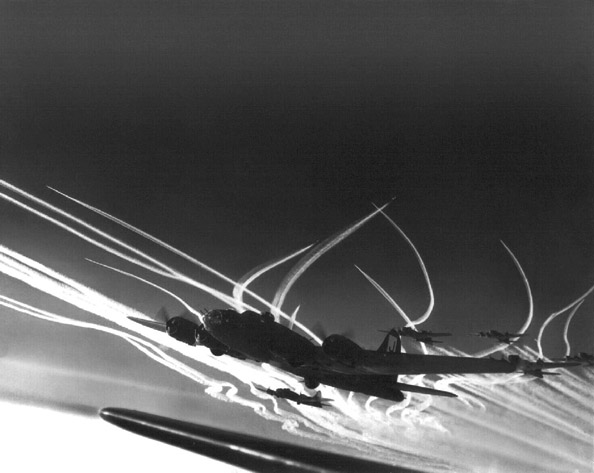
The second reason is that contrails are having an effect on the weather and the climate. It’s thought that the warming effect of contrails (they trap in heat at night) is greater than warming caused by the CO2 the flights emit. While this is a relatively small fraction of global warming, it’s still enough to be a concern. From this climate perspective, we are only concerned with persistent contrails. Short contrails have no real effect on the climate or the weather.
A detailed overview of contrail avoidance technologies is given by Frank Noppel: in his PHd thesis, and in a paper with Riti Singh and Mark Taylor.
Altitude and Mirrors
The simplest method of contrail avoidance and one that has been used since WWII is to not fly in regions of air that support contrail formation. You can do this by flying low enough that it’s too warm, or by making smaller modifications in altitude to avoid flight levels with high humidity.
Unfortunately, high altitude humidity is hard to measure. So the U2 spy plane designers resorted to a rather low tech solution, a small rear-view mirror that allowed the pilot to see if he was making a contrail. Later planes used automated contrail detection techniques such as LIDAR. (See patents US5546183 in 1992, and US5285256 also in 1992)
For commercial flights, changes to altitude are an expense they do not want. Jets tend to fly at the altitude which is most economical for them. That’s a combination of the ideal air density for the engines, and how much power it takes to get up there. Flying lower or higher will reduce engine efficiency, and will create more pollution and CO2, as well as burning more expensive fuel. This paper by Sridar et al calculates an optimal reconfiguring of air traffic could result in a six-fold decrease in contrails, for a 2% increase in fuel. That’s quite good, but it’s a best case, and still quite costly.
It is possible though that a fully computerized air traffic control system might be able to improve on the contrail situation in a more cost-effective way by calculating the most optimal routes for everyone accounting for both engine efficiency and contrail formation. But such a system is still years in the future. See Patent US20090319164, filed in 2008 – this relies on automated spotting of contrails from the ground, and then telling other planes to avoid that region.
Engine Modifications
Contrails form due to moisture in the aircraft exhaust. So an obvious way of preventing contrails would be to remove the moisture. As you can imagine, this is not a trivial thing, jet exhaust is not some static thing – it’s what comes out of the back of the jet engine. Extracting the moisture is inevitably going to severely degrade the performance of the engine.
Contrails also form because the exhaust cools quickly enough so that the water vapor condenses before it’s been too diluted by the surrounding air to do so. So you could prevent contrails either by making the exhaust hotter (so it takes longer to cool, and hence mixes more, avoiding the critical balance of temperature and humidity), or by mixing it with the ambient air quicker. Unfortunately here there’s no easy way of doing this without degrading the performance of the engine. Either way requires more energy to be wasted in the exhaust and not providing thrust. So again you’d be making your engine less efficient, and more polluting.
Contrails also generally require condensation nuclei. Often this comes from soot and sulfur and other byproducts in the engine exhaust. If we could make less soot that would be great, as it’s less carbon particulates. However it would not prevent contrail formation, as it’s very unlikely we could get it down to zero, and there are other condensation nuclei in the air anyway. Patent US20100122519 from 2010 claims to achieve this by using ultra-low sulfur fuel. But it’s only likely to provide a reduction in the initial density.
Chemicals
Another technique that has been suggested and tried over the year is adding some kind of chemical to the exhaust to prevent contrail formation. The most common approach is to add many times MORE condensation nuclei to the exhaust. The large number of condensation nuclei create lots more ice crystals, but they are very small, and if the size can be kept under half a micron then they will be sub-visible. It’s not a guaranteed fix though, as the contrail can still continue to grow visible if conditions are humid enough. Presumably though, by the time the trail becomes visible, the plane will be long gone. So that’s great for stealth, but might not be that useful for climate concerns. Here’s an early test, although it’s not clear what technology they are using:
Several Patents have been filed for such technology, and as patents reference each other we can see somewhat how the technology evolved.
One of the earliest was filed fifty years ago in 1962 by the US Air Force, US Patent 3517505, Method and Apparatus for Suppressing Contrails. Which consist of a chlorosulphuric acid spray, powered by compressed nitrogen, that is mounted near the engines. This is sprayed into the exhaust, the heat breaks it down into hydrogen chloride and sulfur trioxide, which acts as the nuclei.

The problems with this approach were that the acid was very corrosive, and you needed a lot of it – as much as 3% of the weight of the fuel. It’s also not really environmentally friendly, spraying tons of chemicals into the air, just to prevent the formation of some clouds. All of these chemical approaches have the downside of adding additional complicated machinery to the aircraft. So this approach was only investigated by the military, and on some planes, it was dropped in favor of more low-tech approaches, like the rear-view mirror.
US3289409 in 1964 has a different approach, using the less chemically reactive “carbon black” (hydrocarbon soot). The patent describes a secondary combustion chamber that burns a small amount of normal fuel very inefficiently to create large amounts of soot, the theory being that the soot will absorb light, and re-radiate it as heat, essentially masking the white contrail with a black cloud. The downsides here are pretty obvious – a large amount of soot is itself a pollutant (soot blackens snow, contributing to global warming), and the amount of extra fuel needed is given the rather wide range of 0.01% to 5%. In addition, the technique seems highly unlikely to work.
Then we have US4766725, in 1985, which used an exotic blend of surfactants (wetting agents, soap-like things). US5005355 in 1988 uses alcohols. Both use the approach of reducing the surface tension of water, preventing it from forming ice (effectively it reduces the freezing point)
Anti-Contrail Rays
Some of the more interesting and recent contrail suppression technologies come from Noppel, Singh, and Taylor, who suggest that the ice crystals in the contrail can be broken down by zapping them with either electromagnetic radiation like microwaves (US20100132330) or ultrasonic sound waves (US20100043443).
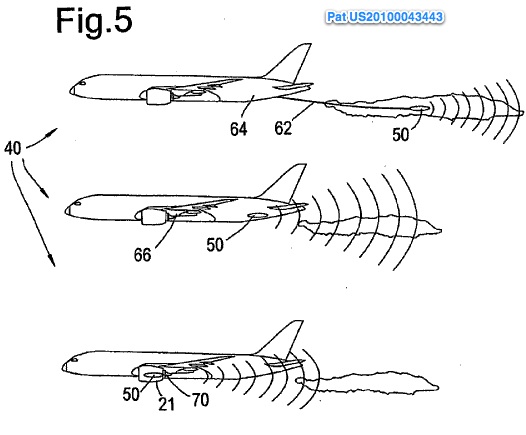
The idea is the radiation or sound energy will melt or break up the ice crystals into sub-visible sizes, or delay cooling past the crucial mixing point. This has a great advantage over the chemical methods in that it’s very clean. No additional pollution is added beyond the extra energy required from the engines. The method is combined with automated contrail detectors, so it’s only activated when contrails would form. This greatly reduces the energy needed.
The primary reason why anti-contrail technology is not being implemented is one of cost. Airlines have zero incentive to do this. Legislation would be required, and there is very little political will for such a thing – there is not even any really compelling evidence yet that it would be, on balance, a good idea, since all the solutions result in an increase in CO2 emissions, and/or additional chemical pollution. Still, it seems likely that such a determination may be made in the future, and we might, in a few decades, see far fewer contrails than we do now.
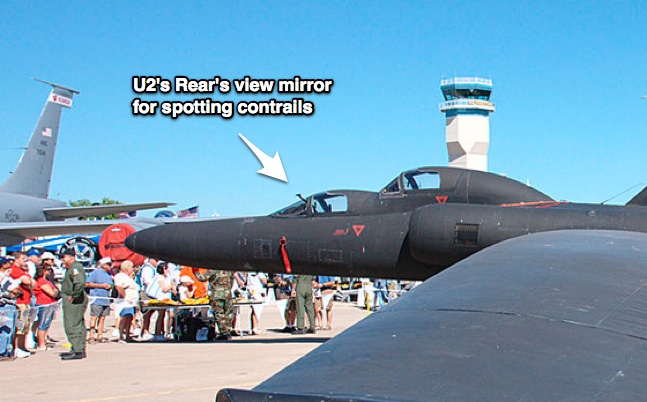
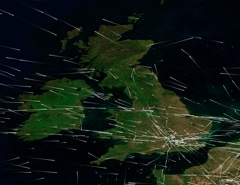
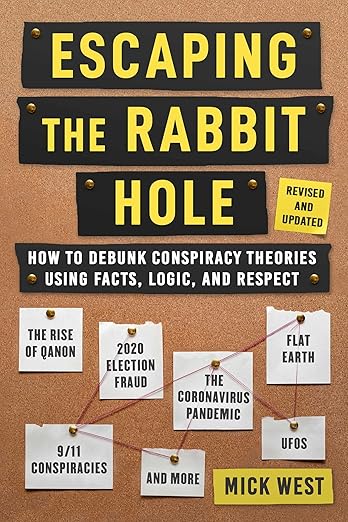
Hi Mick. I tried to post this at Metabunk but I forgot the pass, and the recovery process doesn’t work (I don’t receive the mail with the reset instructions). What do you think about this vídeo? Is it smoke? I cant find anything.
http://www.youtube.com/watch?feature=player_embedded&v=BOHCkNfVlDg
They are Russian fighters su30mki
http://en.wikipedia.org/wiki/Sukhoi_Su-30MKI
Thank you
It was in the spam. Sorry. Posted in metabunk.
Are you still trying to convince people out there with your fabrication?
Or does it occur to you that more people are waking up to the fact that your making up lies to further the NWO Adgenda?
Whatever it is people should do a lot more research on the hidden Adgenda that seems to be unfolding.
Me I don’t believe anything you say or any material that you present.
Only a fool would convert to your way of thinking.
Tell me something I will believe.
Or just ban me from your Foolish site.
OK then.
Jane, could you point out what you think is incorrect?
Of course not, all they want to do is seed doubt about this site. Which is not so bad. Everything here is verifiable or can easily be made so. Or rather: it would not be so bad, if people actually took the time to look into these things. Some people, though, are easily fooled, and that’s what these trolls (sorry, but lately that’s all they are) are trying to do.
So, in any case, people: don’t take Mick’s word for it. Don’t take Jane’s word for it. Check out the claims and the evidence. Then come back and tell us what you found. Let’s discuss this. (Another thing chemtrail activists abhor: discussion.)
Jane said:
“Me I don’t believe anything you say or any material that you present.”
Not believing is O.K. – but don’t just stop there: check out what the science says. Test the material to see if it is genuine, look for contradictions, try to find flaws.
Then remember to apply the same critical thinking to geoengineeringwatch.org and Facebook postings.
JFDee, zwei Dumme, ein Gedanke.